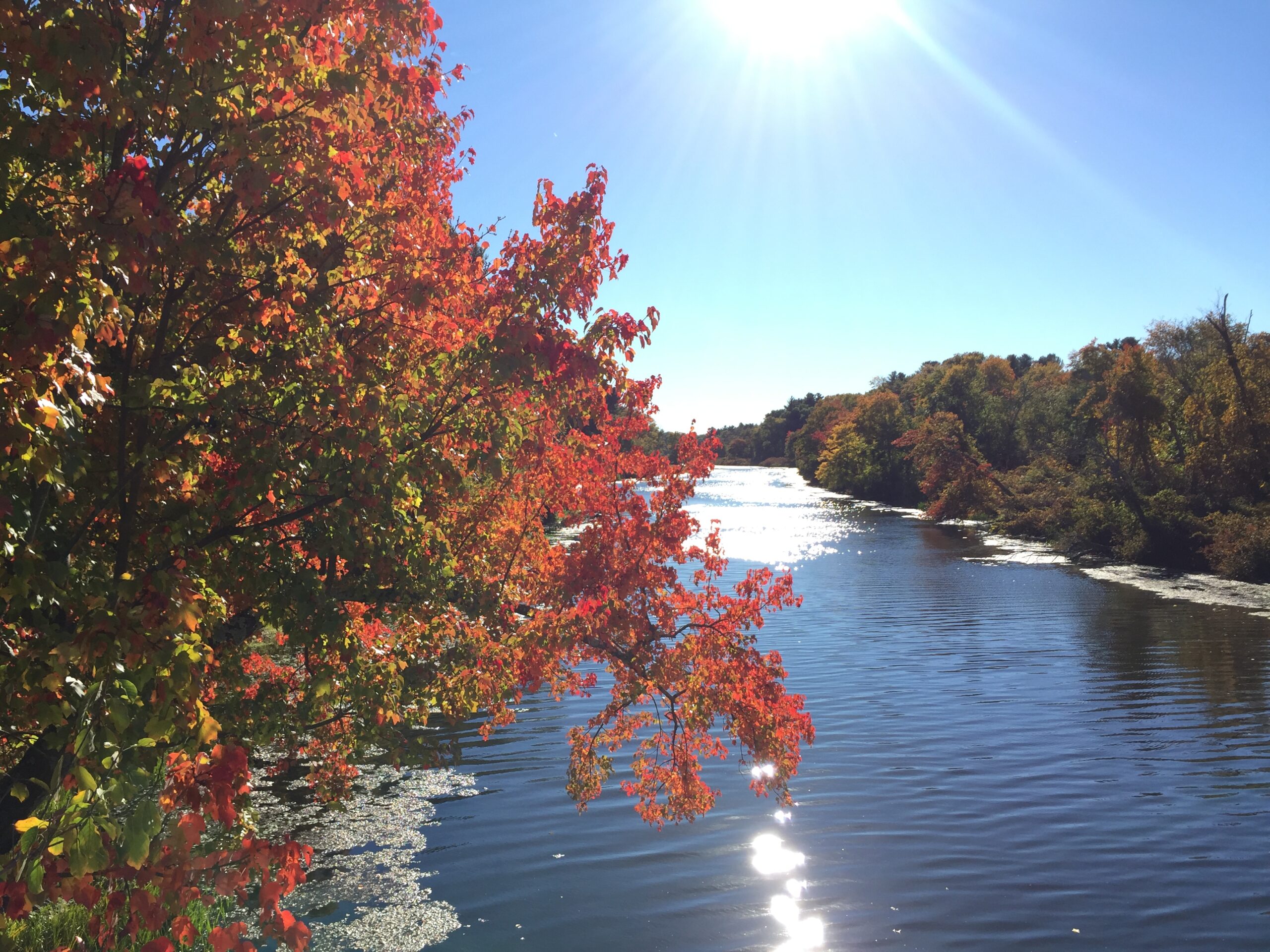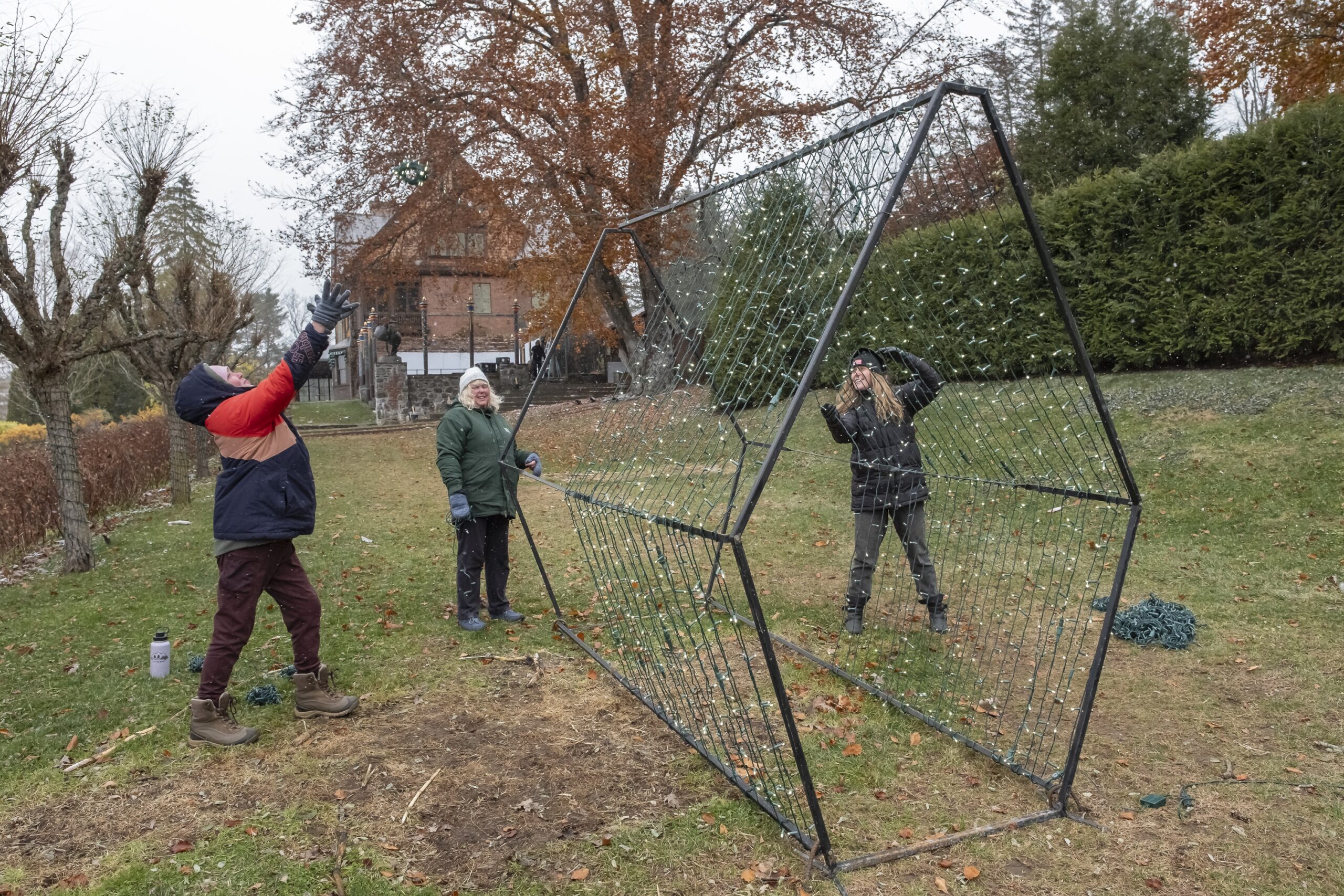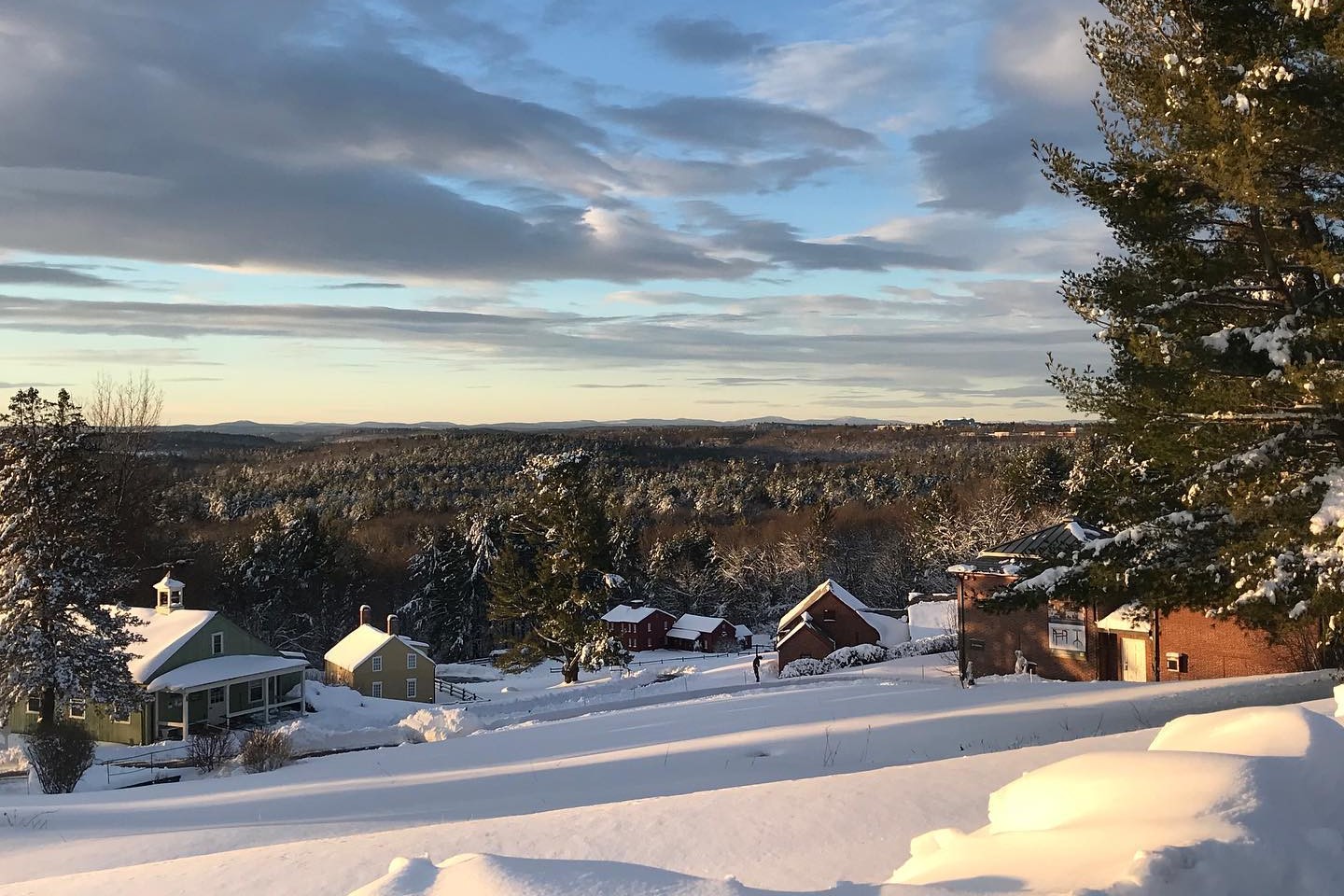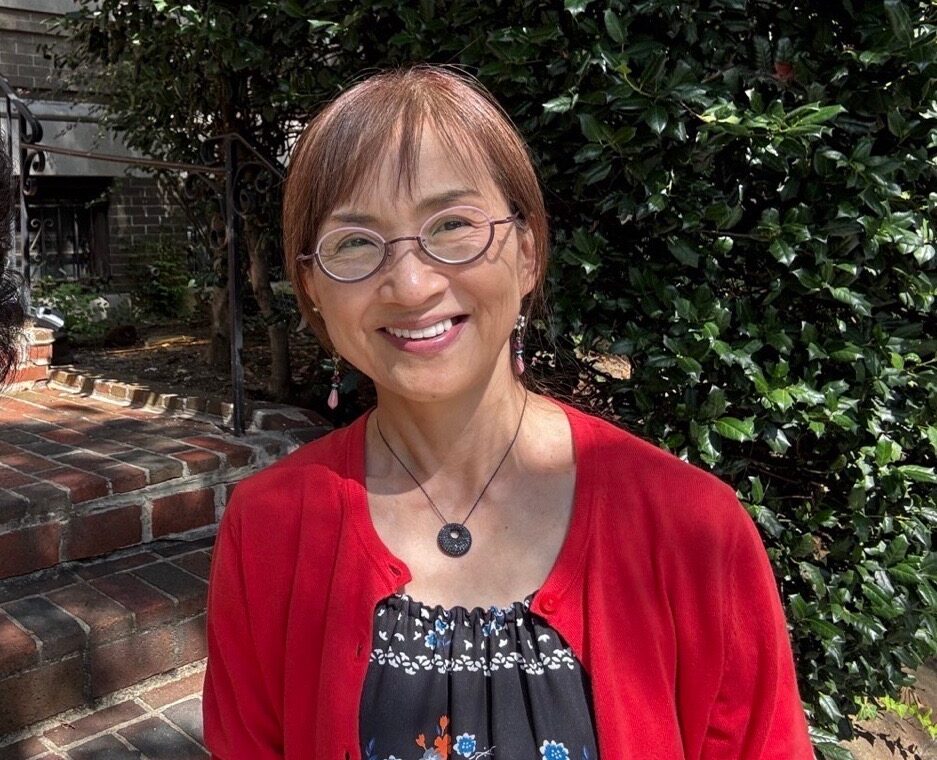This Earth Day, April 22, Perch from Jean Shin opens at Appleton Farms in Ipswich. Perch explores Appleton Farms’ history and current ecological and agricultural activities as well as themes of temporality (ecological and agricultural time) and regeneration. The artwork integrates into the landscape and supports the agroecological program’s efforts at Appleton Farms.
We sat down with Jean Shin (JS) and guest curator Jessica Hong (JH) to hear more about how Perch was conceived, their goals for the project, and more.
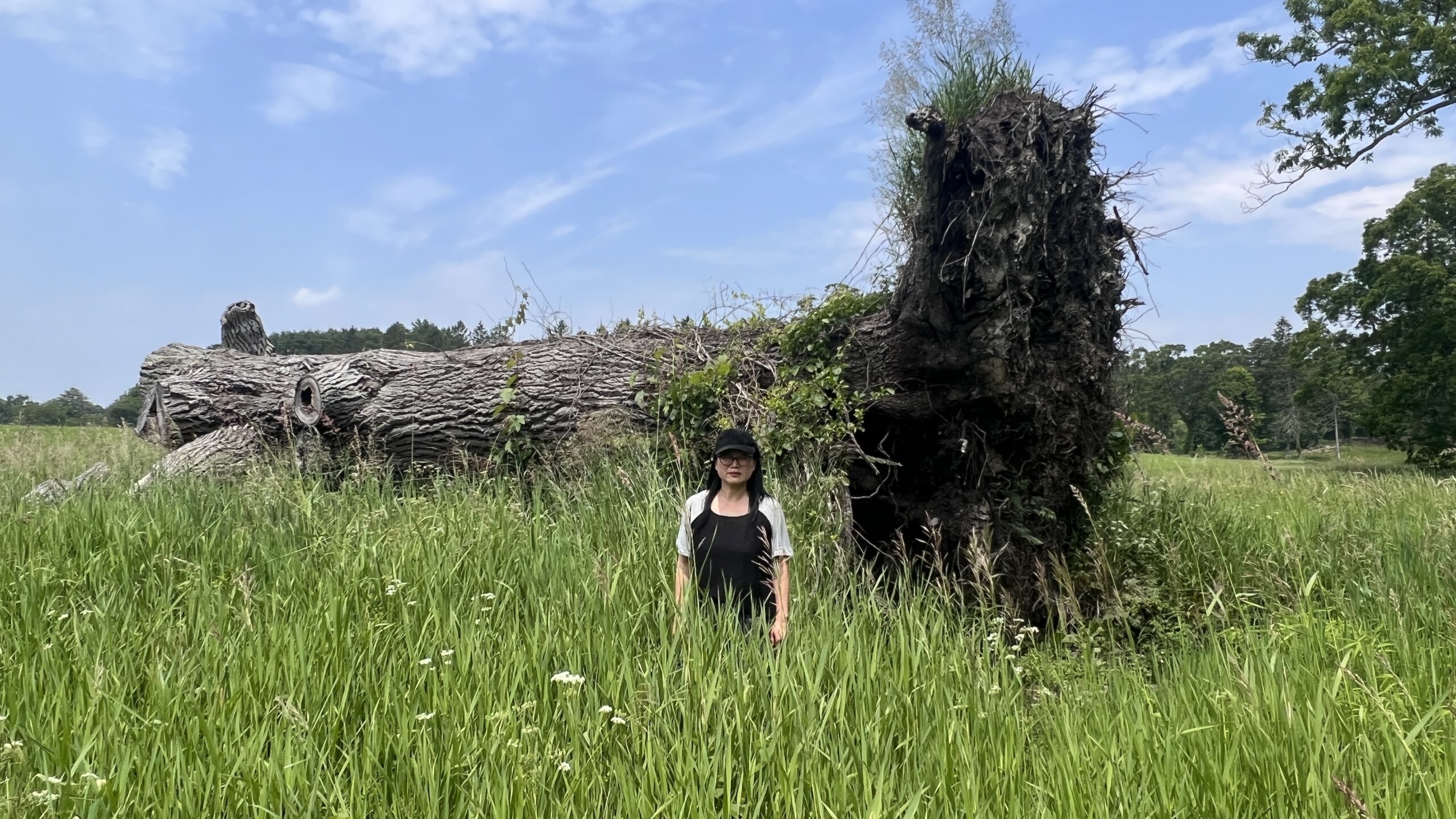
How Perch was conceived?
JH: Perch is years in the making. The Trustees initially approached me to submit a proposal in 2020 for the Art & The Landscape program, and I immediately thought of Jean. I’ve known about her work for some time but we finally met in-person during Asia Art Archive’s Leadership group in 2019 and we’ve been in dialogue ever since. With the Trustees’ invitation, Jean’s deep sensitivity and rigorous research approach to the sites and communities in which she works felt not only fitting but important for this program, so we collaborated on the initial proposal. We were planning during the height of the COVID-19 pandemic and before deciding on Appleton Farms, we considered different sites with a range of histories and ecologies. As we continued our research and development process, travel opened up allowing us to visit these sites, including Appleton, and it was Appleton’s rich history and ecology that inspired this project.
JS: After many conversations with the staff at Appleton Farm and the Trustees, I learned that the agroecologist and a group of volunteers were monitoring birds in the hayfields at Appleton. Their passion for Bobolinks moved me to also fall in love with these migrating songbirds who build their nests in the farm’s grasslands. I envisioned creating sculptures and platforms that would engage visitors in bird monitoring, amplifying the collaborative efforts of ecologists and the agricultural team to support threatened populations of Bobolinks and ensure their survival.
Jean, what was it like working on a farm for Perch, verse other outdoor commissions?
JS: It’s so unique and inspiring! How lucky I am to encounter these birds in the spring at Appleton Farms during their long journey heading north. My primary audience for this project are the birds, but every visit to the farm, I also delight in seeing the beautiful livestock and other animals. We are mutually curious about each other and our work on-site. The sustainable farm community has also been so welcoming. The staff I’ve met are so hard working and hands-on, which aligns with my own labor-intensive, work ethic. Not to mention, the meal breaks are filled with fresh foods and delicious baked goods.
Jean, You are known for using discarded/recycled materials. How did that play into the creation of Perch?
JS: Understanding where materials come from is an important part of my process. I love reclaiming materials that have a rich history through use. We salvaged these old wooden fence rails from Appleton Farm and learned that they were milled from the American chestnut trees that were once plentiful in this landscape. Decades old, these rails needed to get replaced, so these wooden rails became the structural materials for my “tree” sculptures. Since this project was about how nature and the farms coexist, I wanted to create works that combined natural wooden elements of the landscape with the man-made elements of the farm. I’m also drawn to the elaborate copper plumbing found in old farm houses. We sourced recycled copper pipes at the local scrap yard and the director saved some of the deCordova Museum’s copper rooftops tiles that were also being removed at that time for their renovation. These materials have memory and come from the community. These flat copper sheets are now protecting the tops of these outdoor sculptures and the “branches” made from copper pipes are awaiting birds’ arrival.
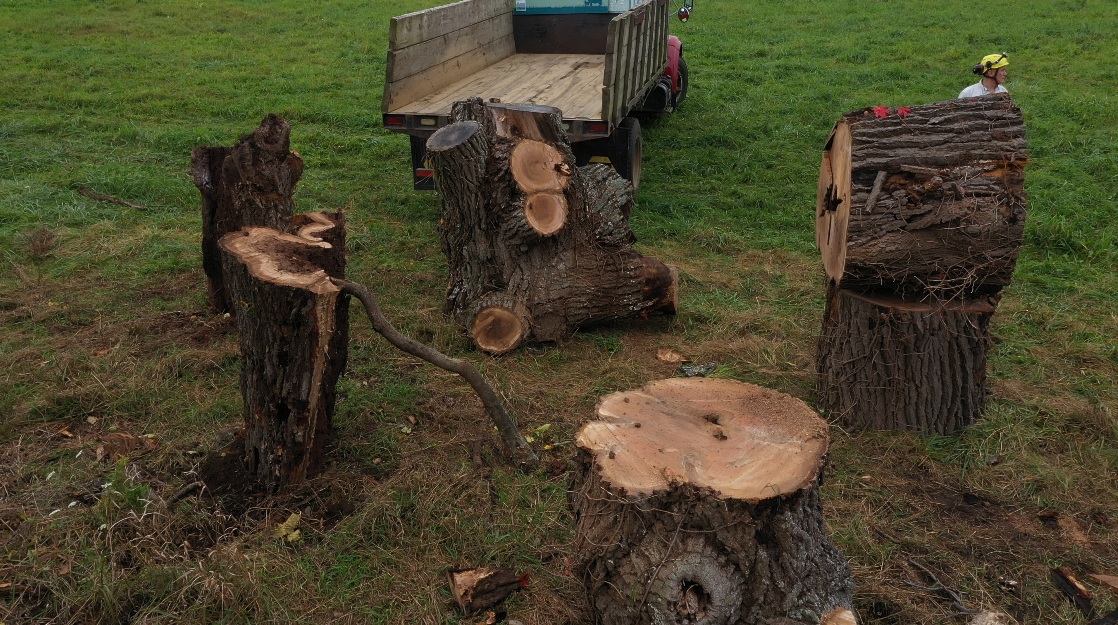
What is the goal for this installation?
JS: Through my project, I wanted to highlight how special Appleton Farms is–a place not only for humans, but more critically for generations of migrating birds who return to Appleton as their temporary home and breeding ground. By providing viewing platforms, I also wanted us to witness time unfold slowly and bring awareness to the cycles of nature, the changing seasons, agricultural time, migration patterns and our own temporality. My sculptures are ghostly reminders of the past meeting the present. They also serve as markers in the regenerative landscape where the distances between us and the birds are visible. Creating structures for birds to perch, we can better count the number of visiting birds and their newborns. These hopeful sightings are important data sets to see how a farmer’s delayed haying at Appleton is having an ecological impact on multiplying Bobolink populations.
JH: Along with the significant themes this project explores–from temporality, regeneration, cycles of life, to interspecies relations and our entwined existences with the broader environment–this project demonstrates the expansive possibilities of art and artists practices. Beyond the curator-artist collaboration, this became a collaboration with farmers, ecologists, and arborists who helped shape the contours of Perch. Bridging the agricultural, ecological, and artistic and cultural, this project became a mutually generative space of learning, sharing, and building together, which is needed more than ever today.
What has it been like to work across state lines on this project?
JS: First, nature has no boundaries. Second, our communities overlap in what we care about and what brings us joy wherever we are located. It’s been a delight to spend so much extended time in the area and connect with so many individuals I adore who live and work there. MA feels closer each time I am there. It’s been especially nice to reconnect with people at the deCordova Museum, the other institutions in Boston and the lovely community that gathers in support of my gallery Praise Shadows in Brookline.
JH: During the development of this project, I transitioned to a new role at the Toledo Museum of Art. Amid the early stages of the pandemic, state borders seemed fixed. Yet simultaneously, it was a time when we had to find ways to connect regardless of enforced borders. This project and its process made us reconstitute how we can dream, imagine, and build together no matter the circumstances. On a personal note, having spent my early formative years in Massachusetts, this cross-state work has allowed nourishing homecomings, making me more excited to share this major project with audiences (and other species!) in the state and beyond.
